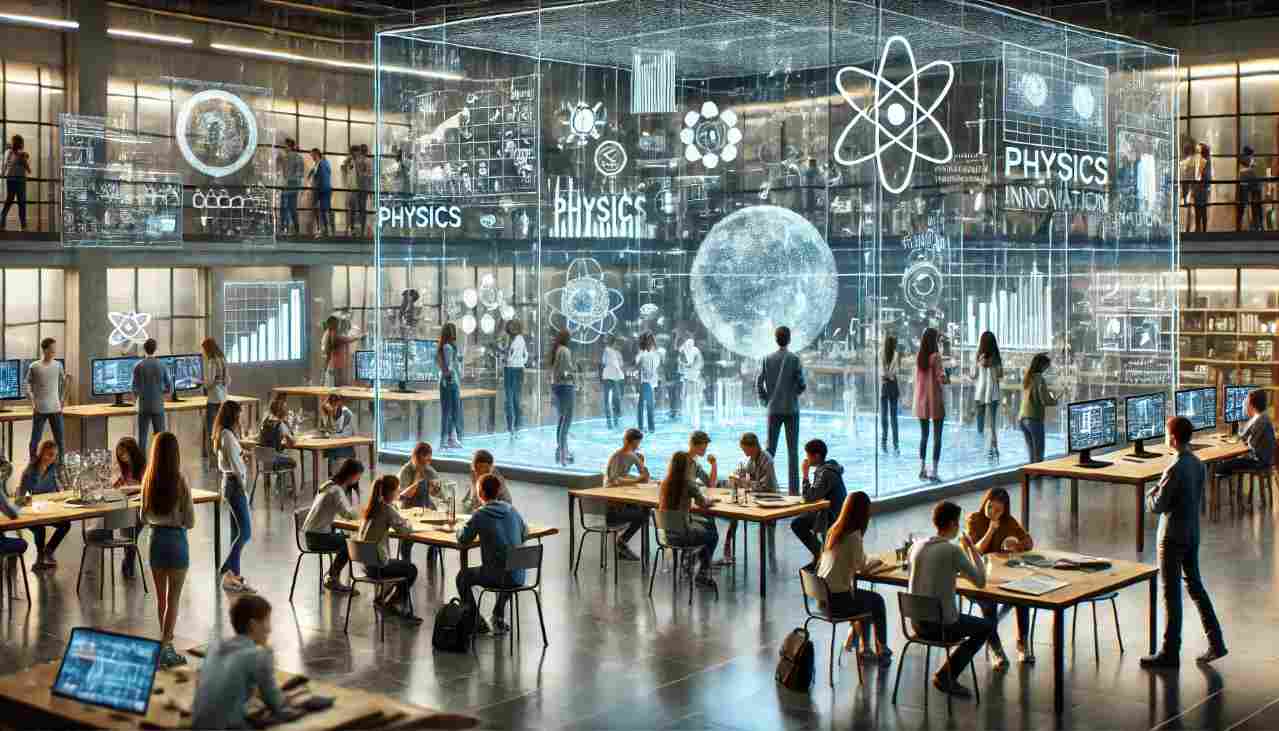Snapshot
The article discusses the importance of incorporating innovation and entrepreneurship education into physics curricula to equip students with skills and mindsets to solve real-world problems and create value propositions.
Key Findings
- The article notes that faculty members may face challenges in incorporating innovation and entrepreneurship education into physics curricula, including lack of knowledge about nonacademic careers, lack of recognition for faculty who integrate PIE and career-focused
elements into their teaching, lack of interest among colleagues, and limited resources. - The limitations of the study include the lack of familiarity with PIE concepts among physics faculty, lack of institutional support, and concerns about losing physics content.
- The article suggests that future work should focus on developing and disseminating approaches for implementing PIE education, creating a roadmap for the next steps, and providing resources and support for faculty members who want to incorporate innovation and entrepreneurship education into physics curricula.
- Future work includes creating mechanisms to facilitate the successful implementation of existing PIE curricula, providing resources and support for physics faculty to implement PIE, and expanding the community of practice to include more faculty and departments invested in adopting PIE.
- The article highlights the practical applications of incorporating innovation and entrepreneurship education into physics curricula, including the development of skills such as leadership, communication, and problem-solving, as well as the ability to recognize opportunities to address human needs and translate ideas into scalable solutions.
- The practical applications of the study include the development of PIE materials and resources that can be used by physics faculty to prepare students for 21st-century careers, and the creation of a community of practice that supports the adoption of PIE in physics education.
Integrating Innovation And Entrepreneurship
Physics students have the potential to develop innovative solutions to real-world problems, but they often lack the training and mindset to do so. While engineers are encouraged to think entrepreneurially, physics students are not, despite their valuable skills in problem-solving, mathematical modeling, and technological expertise. Intentional training in innovation and entrepreneurship can equip physics students to apply their skills in a diverse range of careers, enhancing their opportunities and impact.
The physics innovation and entrepreneurship (PIE) education approach aims to teach leadership, communication, and professional skills, as well as familiarity with intellectual property, return on investment, and other workforce-relevant concepts. This approach can be integrated into the physics curriculum without reducing its quality or content. PIE education can benefit not only students who pursue careers in the private sector but also those who enter academic research environments.
Several initiatives have been developed to support PIE education, including modules for introductory physics courses, technical innovation, and entrepreneurship courses, pop-up courses on industry and innovation, and agile project management in physics design projects.
These efforts aim to provide physics students with the skills, knowledge, and mindset to recognize opportunities to address human needs and translate their ideas into scalable solutions.
Preparing Physics Students For 21st-Century
In 2014, the American Physical Society (APS) and the American Association of Physics Teachers (AAPT) formed a joint task force to identify the skills physics students need to succeed in 21st-century careers. The task force’s report, Phys[21], highlighted the importance of technical, communication, and workplace-relevant skills in addition to expertise in physics. The report’s recommendations align with the Physics Innovation and Entrepreneurship (PIE) approach, which aims to prepare physics students for careers in industry and entrepreneurship.
To support the implementation of PIE, APS launched the NSF-funded PIPELINE Network in 2016, a collaborative project that brings together seven institutions to develop and disseminate PIE materials and build a community of experienced PIE practitioners.
The project has developed several sets of curricular materials, which have received positive reviews from students and have led to new opportunities for collaboration among departments and disciplines. Despite the progress made, there are still challenges to overcome, including the need to engage more physics faculty in the PIE community and to address the obstacles to implementation, such as lack of familiarity with PIE concepts and lack of recognition and support at the institutional level.
Research has shown that many physics faculty recognize the value of PIE but are hesitant to implement it due to concerns about losing physics content in the curriculum. Students also have misconceptions about PIE, believing that innovation and entrepreneurship are not relevant to their physics education and that disciplinary boundaries between physics, engineering, and business are real. However, cross-disciplinary skills are essential for careers in industry and fundamental physics research.
To address these challenges, PIPELINE aims to provide resources and support for physics faculty to teach PIE effectively, to develop and share PIE curricula, and to build a community of practice that can sustain and lead the effort. By working together, physics educators can help students develop the skills, knowledge, and mindset needed to succeed in 21st-century careers and make a positive impact on society.
Also Read: Breaking Physics Norms: Light Casting Its Own Shadow Explained
Limitations
The article notes that faculty members may face challenges in incorporating innovation and entrepreneurship education into physics curricula, including lack of knowledge about nonacademic careers, lack of recognition for faculty who integrate PIE and career-focused elements into their teaching, lack of interest among colleagues, and limited resources.
The limitations of the study include the lack of familiarity with PIE concepts among physics faculty, lack of institutional support, and concerns about losing physics content.
Future work
The article suggests that future work should focus on developing and disseminating approaches for implementing PIE education, creating a roadmap for the next steps, and providing resources and support for faculty members who want to incorporate innovation and entrepreneurship education into physics curricula.
Future work includes creating mechanisms to facilitate the successful implementation of existing PIE curricula, providing resources and support for physics faculty to implement PIE, and expanding the community of practice to include more faculty and departments invested in adopting PIE.

